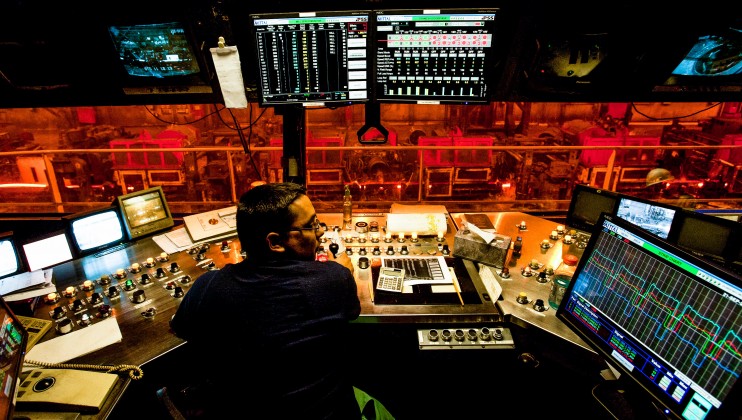
But President Trump’s budget proposal would cut such programs.
German Chancellor Angela Merkel came to Washington on Friday to meet with President Donald Trump for the first time. You probably already know how it went.

Yeah. It was awkward.
While her public appearances with Trump didn’t go so great, it appears that a bit of progress was made during at least one White House meeting. Perhaps knowing Trump would want to talk trade and job creation, Merkel brought along the chief executives of three of Germany’s top manufacturers — industrial giant Siemens AG, automaker BMW AG and auto supplier Schaeffler AG — to share with Trump some ideas for growing U.S. industry.
And Siemens CEO Joe Kaeser told the Wall Street Journal their meeting with the president “was encouraging.” The CEOs focused their discussion on vocational training programs, which Germany excels in, and apparently the president was receptive. Here’s the WSJ:
“The CEOs told him German programs could be models for U.S. industry, and German companies can help establish them. … The CEOs said vocational training programs are even more important as robotics and artificial intelligence begin to radically transform manufacturing.”
While Trump might have appeared receptive in the meeting, the budget plan he released earlier in the week tells a different story. It calls for federal funding cuts to several programs designed to support American manufacturing, like the Manufacturing Extension Partnership, and cuts to a number of federally funded job training programs.
In the Cleveland area, for example, many local nonprofit and government programs rely on federal funding for training programs that help workers find jobs in sectors like manufacturing and health care. These programs have been crucial for many workers who once had old school factory jobs but are now transitioning to new jobs that require more advanced skills.
Rather than cutting funding to job training programs, the president and his team should be focused on refining and creating the kinds of workforce training programs needed for the manufacturing jobs of the 21st century.
If Trump succeeds in his plan to bring back millions of manufacturing jobs — something we hope does indeed happen — it’s important to remember that these jobs won’t look like the manufacturing jobs of the 1950s.
Instead, these jobs will require workers to possess a new set of advanced skills, and the United States must make sure it has a vocational system that can properly train these workers. In fact, our own Scott Paul discussed this very topic on C-SPAN’s Washington Journal on Sunday morning.
“Our vocational system… was very adept, I think, at producing skilled workers up to and through the early 1990s,” Paul said. It “shifted in emphasis after that to focus on services. So there was a gap in opportunities for vocational training. At the same time, and I’ve heard this from a lot of folks, there’s no shop class anymore in high school. So the underpinnings of that vocational training in high school has disappeared.”
The Obama administration recognized this challenge, and awarded millions of dollars in grants to expand apprenticeship programs in several fields, including in manufacturing. Many high schools also have begun to reintroduce vocational training programs, including the Manufacturing Connect program at Austin College and Career Academy in Chicago, which former President Obama cited as a model.
Other model programs include Steelworker for the Future, which provides on-the-job training for participants while they earn an associate’s degree (and the students earn a paycheck along the way). Community colleges also have a big role to play in training the workforce of the future, Paul noted.
“In the old days, that factory owner could just walk into the high school and say, ‘Hey, who do you got in your shop class who’s coming out and gonna graduate?’ And they could do a couple months of training and get them up and running,” Paul added. “The jobs are different today. Most of them require something more than a high school degree, and those classes don’t exist anymore in a lot of high schools. It’s a new era.”
President Trump has made manufacturing job creation a priority for his presidency. While he’s focused most of his attention on reworking America’s trade relationships, Trump also must take steps at home to ensure that American workers — including those who have suffered as a result of unfair trade — will have the training they need to take on jobs that will require an advanced set of skills.
The White House on Monday reported that Trump "will lead the country in an effort to embrace new and effective job-training approaches," and noted that the president called workforce development programs "a top priority of his Administration." Here's hoping he keeps his word.
